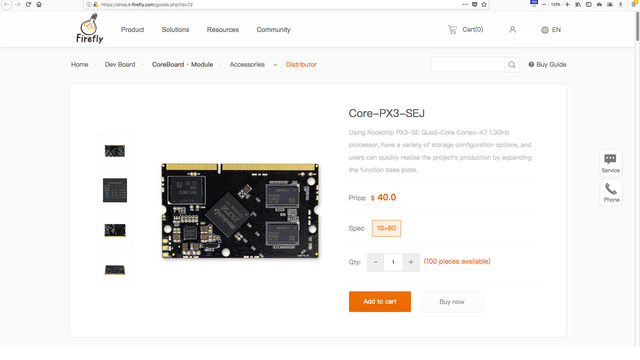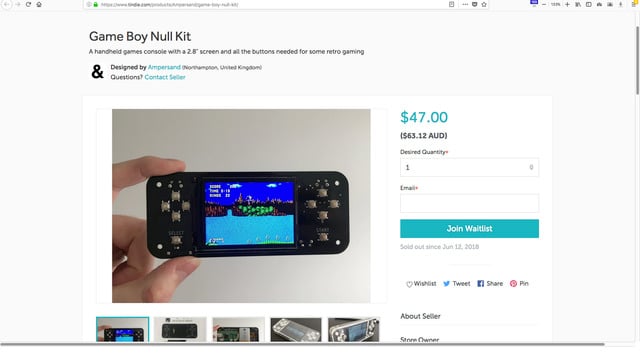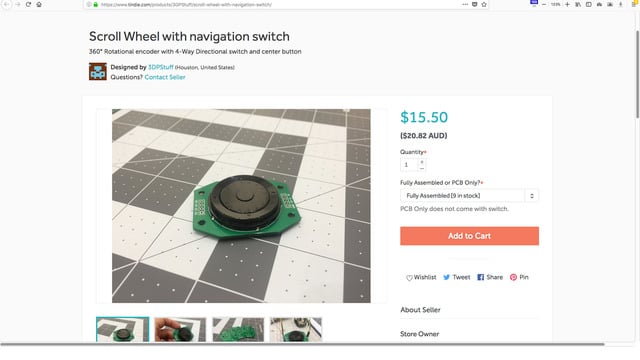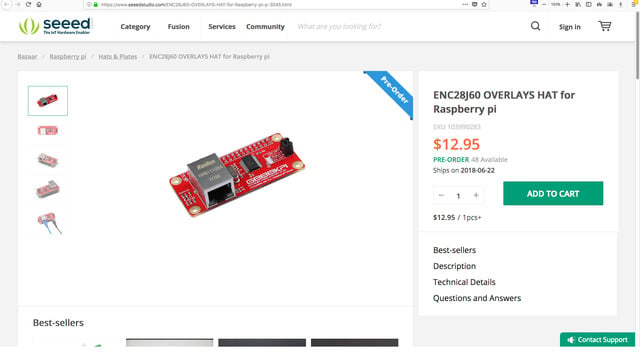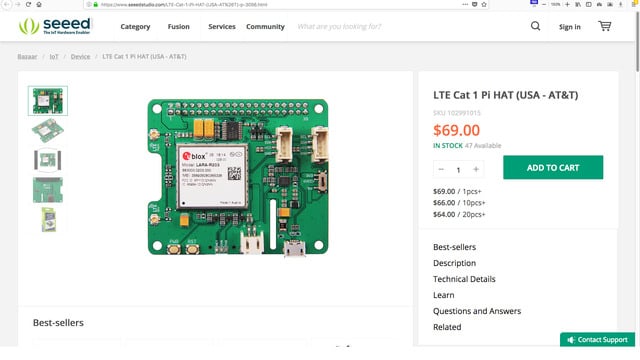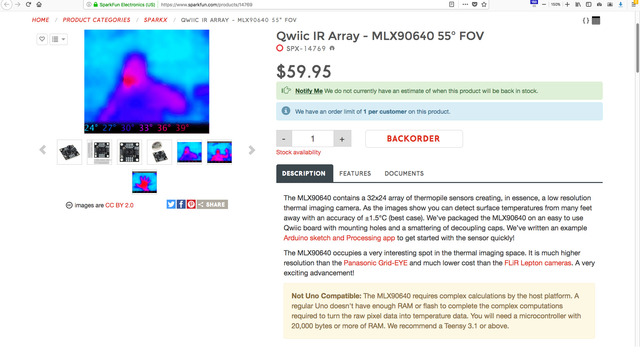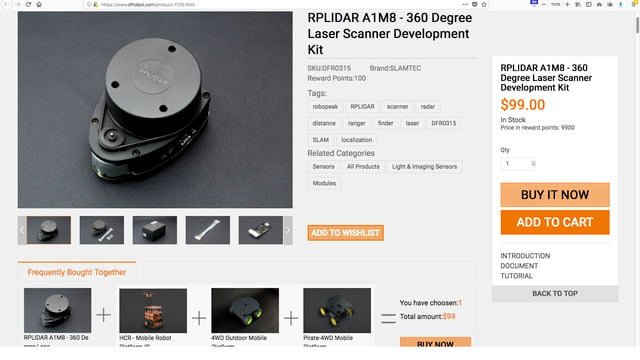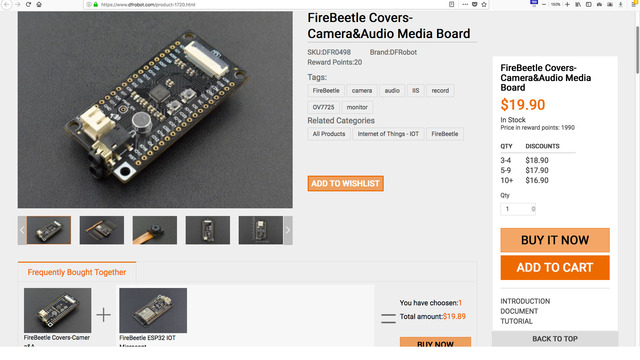Weekly Roundup #55: New Maker Products // News
The Weekly Roundup of New Maker Products returns after a bit of a hiatus and a lot has happened since my last one. In particular, something that will completely change the electronics Maker community.
Crowd Funding
KickStarter
There’s quite a few Kickstarter campaigns that have finished since my last Roundup, but I won’t mention them in this video. Otherwise you’ll be disappointed. So, on to the new stuff…
CrowPi
The CrowPi is a STEM education thingy. There’s a number of these around, but this is the first stab at a Kickstarter campaign by Elecrow. It’s a kit based on the humble Pi and has buttons, LEDs, motors, pots and sensors all in a snazzy portable case. They also have a bunch of lessons you can follow.UDOO BOLT
UDOO is upping the ante with the next revision of their SBC called the Bolt. The starting price tag of US$229 may seem steep, but for that you are getting a dual-core 3.2GHz AMD Ryzen SoC with a Radeon Vega 3 graphics, 32G eMMC and a DDR4 RAM slot. So, you’ll have to buy your own RAM. They also have other early bird levels that give you 4G and 8G DDR4 RAM and a WiFi and Bluetooth module. There’s also another model that gives you Vega 8 graphics and a quad-core 3.6GHz SoC. All the boards have three M.2 key slots, SATA 3.0, and surprisingly an ATmega32U4 with a standard 26 GPIO Arduino header and GPIO expander with an additional 10 GPIOs, Grove ports, GbE, USB Type C, dual HDMI 2.0, dual SODIMM RAM slot, 2 USB 3.1, and powered from a 19v DC supply. This SBC is a real powerhouse - you can drive 4 displays at 4k/60Hz resolution, with SATA and GbE. The addition of the ATmega almost seems an after-thought and I’m surprised they didn’t use a SAMD21 or SAMD51 instead as you get more features for the same price as the ATmega. It remains to be seen if the ATmega has any power control over the SoC.Pirl Charger
Coming down from that high we have the Pirl charger, which I tested in my last mailbag. This is a USB charger with four independent ports giving you 2.7A per port. It’s a pretty decent charger with over-load, over-current, over-temperature and short circuit protection. If you want to see what I think of it, check out my mailbag.Digirule2
Do you remember the Altair 8800? This was the first commercial electronics computer kit running off the 8080 CPU and was really the first SBC. If you want to relive those 70s glory days, then you can pick up the DigiRule2. It simulates the Altair programming interface using a PIC MCU, with address and data LEDs, program load, save and run buttons. They have a handy Excel spreadsheet that compiles your assembler into machine code for you, so you can enter it into the ruler. Pretty cool… oh and it’s also a ruler… I think.Up AI Edge
The Up guys are back at it again with the AI Edge Kickstarter. This campaign isn’t just for one board, but a whole stack of boards and kits, some of which were launched back in February. They have the AI Core M2 card, which runs two Intel Movidius VPUs and 512M RAM. Then there’s the Vision Plus board, which runs 3 Intel Movidious VPUs and 512M RAM, GbE, two USB 3.0 ports and miniPCIe expansion. Then the Net Plus, which provides 4 GbE ports, mPCIe, SATA and USB3.0. Then they have an Up Squared AI vision dev kit, with an Up Squared E3950 SoC, 1080p camera, AI Core M2 card, enclosure and power. Most of the pledges aren’t cheap, but you’re getting some serious AI grunt.Crowd Supply
μArt
If you’ve ever had to work with UARTs, then you’ll know that your mileage can vary a lot with them. Over at Crowd Supply, the uArt looks to address a lot of the issues you can get with USB to UART bridges. It works off a wide voltage range of 1.8 to 5.4v with auto-sensing, has all the UART handshake lines with pullups on all inputs, reverse polarity, over-current, ESD and filtering protection, full galvanic isolation, and up to 3MBps transfer rate. This is definitely one for your toolbox.AIR-T
The AIR-T is another Software Defined Radio, but is a whole lot more beefier than others I’ve seen around. It’s more of an SBC than an SDR as it has an Nvidia Jetson TX2 module, Xilinx Artix-7 FPGA, and an Analog Devices MIMO transceiver. Capable of handling up to 250MHz on two Tx channels and 100MHz on 2 Rx channels. If you’re a radiohead, then this one would interest you.SPIDriver
The SPIDriver is a small board that allows you to debug SPI signal lines between any device and USB. Since it’s a debug device it can only hit 500Kbps on the SPI bus, but it allows complete control using an Open Source application. So you can read and write to SPI flash, or LCD screens. There’s also libraries for Python and C if you really want to test out your code.LiFePO4wered
LiPo batteries have a lot of inherent problems. They are fairly unstable storage devices that don’t like being either fully discharged or fully charged and don’t have a huge amount of charge cycles. LiFePo4 batteries, on the other hand, address all these issues. Here’s a CrowdSupply campaign for a LiFePo4 battery charger for your Pi. Capable of handling standard 18650 or 14500 batteries and has all the usual protection circuitry that you’d expect in a reasonable charger as well as full control over the unit from the Pi.NeTV2
Bunny Huang is back on CrowdSupply with a video development board aiming squarely at the DMCA. It’s an FPGA based board that allows video processing applications to be created without the encumbering restrictions of the DMCA. For example adding pixels to an encrypted bitstream without decrypting, or have full processing access to an unencrypted stream. It can handle two HDMI input streams at 1080p/60Hz and output to two HDMI ports and can interface to an ordinary PC via a PCIe bus, or using a Raspberry Pi. If you’re using a Raspberry Pi, then you can power the whole thing from a 12v DC jack.GroupGets
Capacitive Fingerprint Recognition Module
Over at GroupGets they have a couple of fingerprint sensors in. This one is a capacitive sensor with a 192 by 192 pixel sensor and onboard STM32 running off a 5v DC supply. Capable of storing 200 prints locally and controlled via USB.Optical Fingerprint Recognition Module
Then there’s this optical version, with a 258 by 202 pixel resolution running off a 3.6 to 6v DC supply.Honorable mentions
US Tariff
From the 6th of July this year, the US will be imposing a 25% tariff on over 800 categories of goods coming from China in a retaliation to Chinese government subsidies. I reckon the 4th of July would have been a better date, but jokes aside, this is something that will affect the entire electronics Maker community.Every passive component is on this list, resistors, capacitors as well as transistors, diodes, displays, oscillators and equipment such as signal generators. About the only thing that isn’t on the list is laser diodes. So, you can bank on everything you buy within the US going up by 25%. That’s a huge amount for a hobbyist. Will it spell the end of the electronics Maker community? Who knows? But, if you have the spare cash now, I’d buy as many components as possible before the price hike.
NanoPC-T4
The Friendly guys are back at it again with a bunch of new SBCs. The first one is the NanoPC-T4, which is based on the hexa-core RK3399 SoC, with 4G DDR3 RAM, 16G eMMC, dual-band WiFi, GbE, M2 key, 40 pin almost compatible GPIO header, 4k capable HDMI, DisplayPort, MIPI-DSI & CSI and USB3.0, all powered from 12v DC. They’re doing their old trick of shoving as many features in as possible. However, good to see a lot of SBC companies abandoning the microUSB power port and using DC jacks instead.Smart6818
They also have a module based on the Samsung octo-core S5P6818 SoC, with 1G DDR3 RAM, 8G eMMC, GbE, WiFi, Bluetooth and 174 pins of GPIO goodness with a standard Pi GPIO header.Smart4418
Then there’s the Smart4418 which is based on the Samsung quad-core S5P4418 SoC with 1G DDR3 RAM, 8G eMMC, GbE, WiFi, Bluetooth and possibly the same GPIO layout as the Smart6818, but I’d have to check the schematics on that. This board can fit into their carrier board, which pushes out everything from the module as well as providing SATA ports and M.2 slot.Core4418
Then there’s the Core4418, which is pretty much the same as the Smart4418, but minus a lot of the GPIO pins and in a much smaller format.Core-PX3-SEJ
Meanwhile the Firefly guys have come out with a module called the Core-PX3-SEJ… Either I’m not up with the latest l33t 5p3ak, or the engineers ran out of naming ideas. Why don’t they give it a trendy name, like Pixy? Anyway… This SODIMM style board runs the quad-core Rockchip PX3-SE with 512M, 1G or 2G DDR3 RAM options, 4G to 32G eMMC options, SD slot, GbE, WiFi, Bluetooth, HDMI, and all the usual plethora of GPIO options. The SoC is capable of encoding and decoding H.264 video at up to 1080p/60Hz and you get all this for only US$40, which is pretty decent. The only catch with SODIMM SBCs is that you usually get hit with carrier board prices. However, for only an extra US$20, you can pick up the carrier board for this.MKR Vidor 4000
Last year I predicted that 2018 would be the year of the FPGA for Makers. We’re already half way through the year and we’ve seen boards like the TinyFPGA surfacing. Well, the Arduino guys have also seen the writing on the wall and have released the MKR Vidor 4000. Based on an Intel Cyclone FPGA, with a really stupid name, it has 16 thousand Logic Elements, 8MB SDRAM, 2MB QSPI flash, HDMI, MIPI-CSI interfaced to a mPCIe connector. Not only that, but it has a SAMD21 with all the GPIOs pushed out and a HW crypto chip. Can be powered from PCIe bus, USB, or LiPo battery. This is a very cool little board and I think I’ll get a couple of them for future projects.Arduino Uno WiFi
Then there’s an upgrade on the Arduino Uno running the ATmega4809 and a Ublox W102 WiFi module. This makes it very similar to an ESP32, but the advantage is that both ICs work independently, so your code doesn’t have to share the CPU with WiFi code.Arduino MKR NB 1500
Then there’s the Arduino MKR NB 1500, using a SAMD21 and U-blox SARA-R410M module, powered from 5v, USB, or LiPo. This is a pretty cool module, capable of NB-IoT and LTE Cat-M1. I’m pretty sure this is the smallest mobile network board I’ve seen.Arduino MKR WiFi 1010
And finally there’s the MKR WiFi 1010, running a SAMD21 along with a U-blox NINA-W10 module. This is based on the ESP32, so provides pretty much the same lineup. Like the MKR NB 1500, has the same GPIOs, power options and footprint.Khadas Tone
The Khadas guys have come out with an expansion board called the Khadas Tone. This is an audio processing board running an XMOS XU208, which is a pretty grunty 8 core realtime SoC. It also has a 32bit stereo DAC with some decent audio specs. You can sample up to 768kHz at 32bit resolution with a very low jitter and can transcode in realtime to several different audio CODECs.Maker Shops
Tindie
There’s a bunch of new stuff over at my favourite Maker store, Tindie.



















